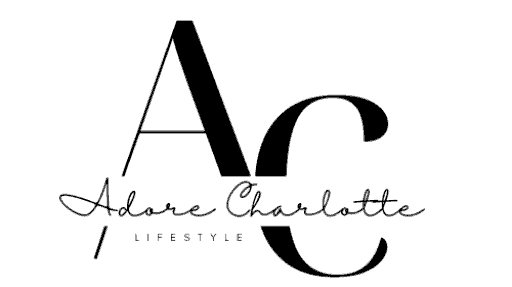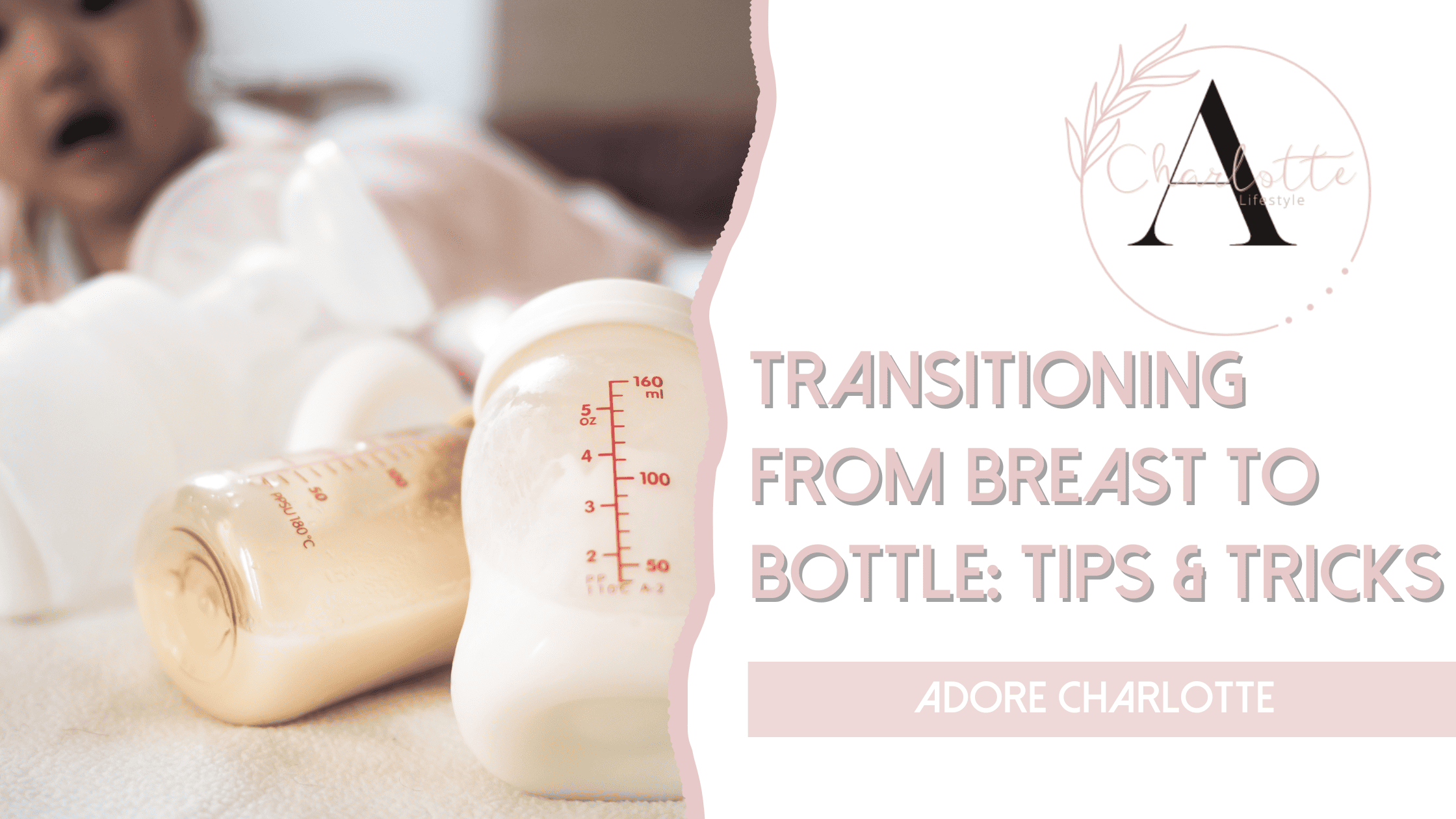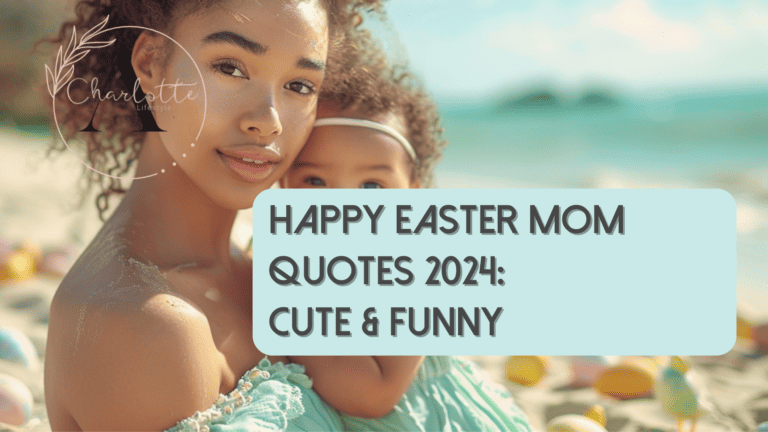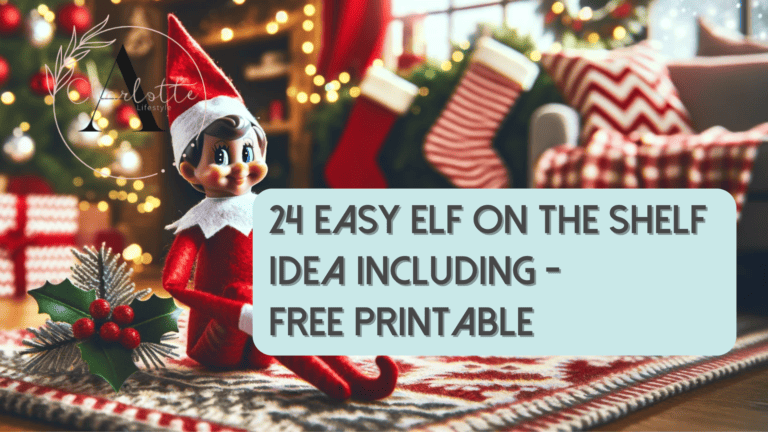Easy Tips & Tricks: Transitioning Breast to Bottle Feeding
Hello, lovely readers! It’s me, Charlotte, your go-to gal for all things family and lifestyle. As a mum of three, I’ve had my fair share of sleepless nights, nappy changes, and feeding marathons. Speaking of which, let’s dive into today’s topic – transitioning from breast to bottle.
Transitioning from breastfeeding to bottle feeding is a journey many mums embark on, and it can be a rollercoaster. Harlow is ten months old, and we ended our breastfeeding journey at eight months old. I did the same with both boys, Hayden at four months and Hudson at six months.
Some of the links in this post are affiliate links. If you click the link and purchase the item, I will receive an affiliate commission at no extra cost.
All opinions remain my own.
It was a bittersweet moment, but I knew when we were both ready and made that process at a speed that was right for both me and my babies.
I’m always willing to help and give advice from my wealth of knowledge. So, buckle up and let’s navigate this together!

The Why and When of Combination Feeding
As the name suggests, combination feeding is a blend of breastfeeding and bottle feeding. But why opt for it? Life’s a jigsaw; sometimes you must shuffle the pieces to see the bigger picture.
Benefits of Combination Feeding
Flexibility:
If you have older children, juggling school events, play dates, and nap times offers you a breather. Your partner or family can jump in for a feeding session, giving you a well-deserved break.
Bonding:
It’s not just mums who bond over feeding. Partners, siblings, or grandparents can share this intimate moment too.
Consistency:
If you’re out and about, diving around or head first into your latest side hustle. You’re assured your baby is getting nutrients.
Transition Ease:
It paves the way for a smoother shift to exclusive bottle feeding when the time is right.
Drafting a Combination Feeding Schedule
Don’t fret; it’s more manageable than it sounds. Start with one bottle a day when you’re most busy or exhausted. Monitor your baby’s response, gradually increasing as you both find your rhythm. Remember, it’s not set in stone; tweak it as you go! You know what’s right for you both.
Choosing the Right Bottle to Help with Transitioning from Breast to Bottle
Enters: The Teatle Bottle. I’ve tried a few bottles in my time, but this one’s a game-changer. Why, you ask?
- Mimics the Breast: Its design closely resembles the natural shape, texture, and movement of a mother’s breast, making the transition a breeze.
- Anti-colic: The unique vent system ensures minimal air intake, reducing colic episodes. A win for baby and mum!
- Easy to Clean: This feature is a godsend for a mum who thrives on organisation—no fiddly bits, just straightforward cleaning.
Best Bottles for Combination Feeding
While The Teatle Bottle is my top pick, there are a few others that come highly recommended:
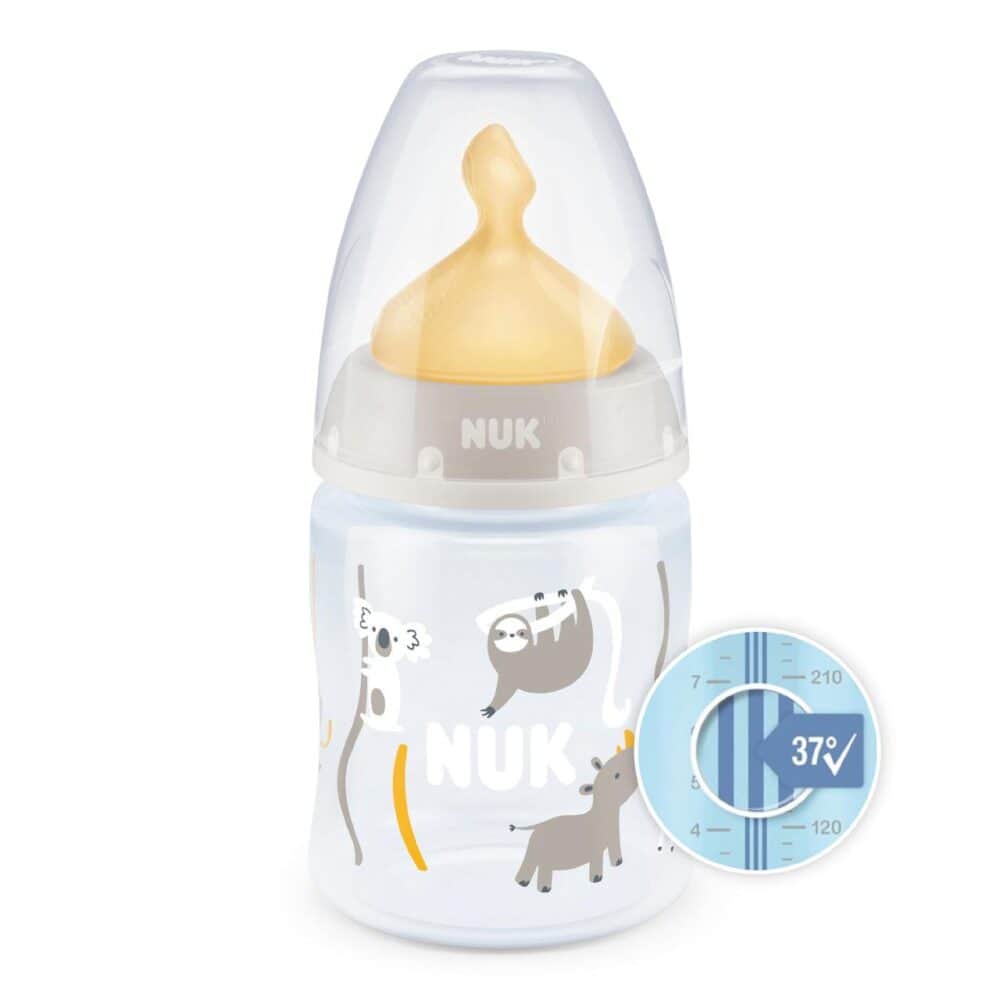
NUK First Choice Bottle
Known for its orthodontic teat, it promotes healthy oral development.
- Orthodontic Teat Design: The standout feature of this bottle is its specially designed orthodontic teat. This isn’t a random design; it’s crafted to mimic the shape of a mother’s nipple during breastfeeding. This design ensures an easier latch and reduces the chances of nipple confusion.
- Promotes Oral Development: Beyond feeding, the NUK bottle lays a foundation for healthy oral growth. The teat promotes correct oral development, ensuring the baby’s jaw, teeth, and palate develop in sync and naturally.
- Material Matters: Made from high-quality materials, the bottle ensures that what your baby is sucking on is free from harmful substances, giving parents that extra peace of mind.
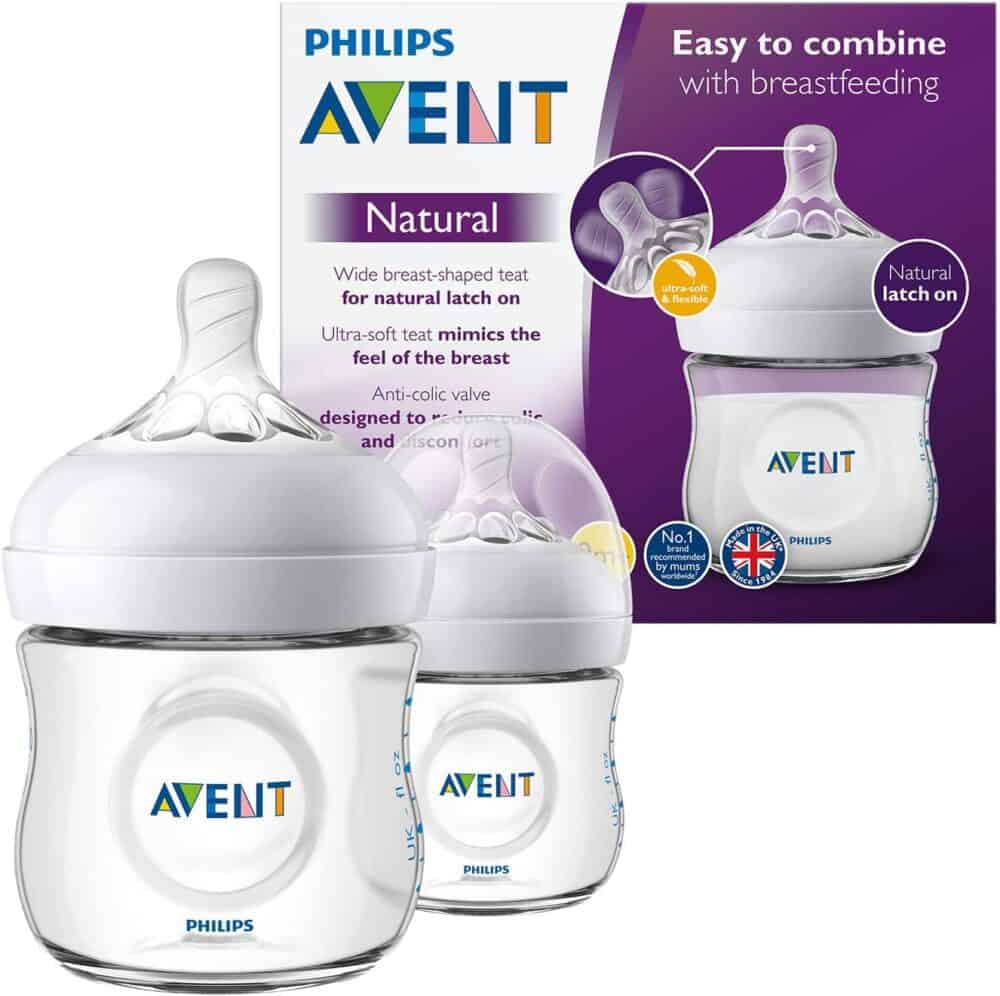
Avent Natural Bottle
The Avent Natural Bottle has long been in the arsenal of many mums. Let’s explore why:
- Soft, Textured Teat: The bottle’s teat is uniquely designed with a soft and textured feel. This provides a more natural latch for babies, closely resembling the breast and making the transition between the two more seamless.
- Natural Latch: Thanks to its wide, breast-shaped nipple, it encourages a natural latch. This can be especially handy for mums looking to combine bottle and breastfeeding.
- Innovative Petal Design: The inside of the teat has a petal design that prevents it from collapsing. This means uninterrupted feeding for the baby and less hassle for the parent.
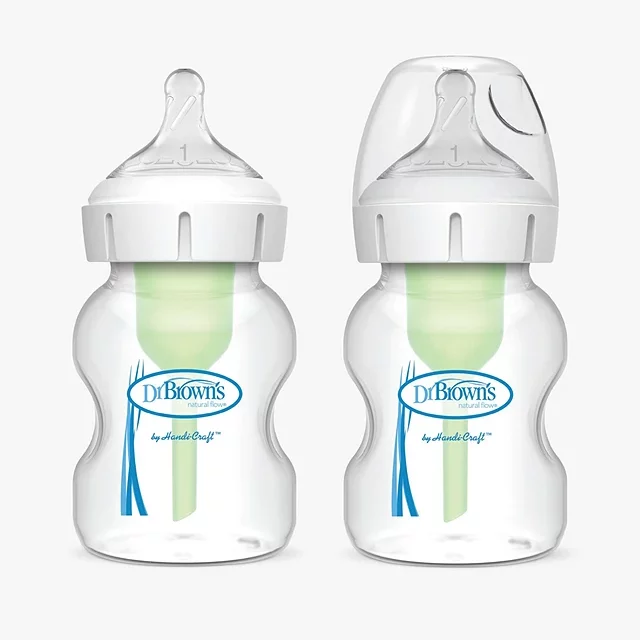
Dr Brown’s Natural Flow
Ask around, and many parents will swear by Dr Brown’s Natural Flow bottle. Here’s a closer look:
- Anti-colic Superstar: The standout feature of Dr Brown’s bottle is its patented vent system. This system removes air from the milk or formula, ensuring the baby isn’t swallowing any unnecessary air bubbles, which can lead to colic episodes.
- Preserves Nutrients: By eliminating the oxidation process, this bottle ensures that essential nutrients like vitamins A, C, and E remain intact in the milk.
- Versatile Design: Whether you’re feeding formula or breast milk, the bottle is designed to handle both without any issues. Plus, its ergonomic design ensures easy handling for parents and babies alike.
Each bottle offers unique features and benefits, making them popular choices among parents. The key is finding the one that best suits your baby’s needs and your personal preferences.
Tips to Nail the Transition
- Stay Patient: Every baby is unique. While Hudson took to the bottle like a duck to water, Hayden was a different kettle of fish. I spent a small fortune on bottles for that kid. Give it time and keep trying.
- Warm it Up: Some babies prefer their milk a tad warm, much like breast milk. A quick dip in warm water should do the trick.
- Get Personal: Sing, talk, or coo – whatever floats your boat. It’s a bonding moment, after all.
- Involve Siblings: Hayden and Hudson often play ‘feeding time’ with Harlow. It’s so sweet to watch and ease Harlow into the new routine.
The Emotional Rollercoaster of Switching
Transitioning is not just about the physical act of bottle feeding. There’s an emotional aspect that’s often overlooked. Many mums feel a twinge of guilt or sadness. Know that it’s okay to feel this way. You’re not alone. Balancing work, personal passions like blogging, and family can be overwhelming. What’s important is your love and care, irrespective of the feeding method.

Addressing Common Concerns
Many mums have voiced concerns about combination feeding possibly reducing their milk supply. Remember, the more you nurse, the more milk you produce. If introducing a bottle, try pumping during that time to maintain supply. There are so many excellent hands-free breast pumps for you to choose from.
- Another concern is nipple confusion. Babies are more intelligent than we give them credit for! Using bottles like The Teatle Bottle and NUK First Choice, designed to mirror the natural breastfeeding experience, can minimise this.
Transitioning from Breast to Bottle: Key Takeaways
- Combination feeding offers flexibility, ensures consistency, and allows a smoother transition.
- Opt for bottles that mimic the breast. The Teatle Bottle and NUK First Choice are top contenders.
- It’s okay to feel a mix of emotions. Surround yourself with a supportive community like Facebook Groups or join forums to share experiences and tips.
- Remember, every baby is different, and what works for one might not work for another. It’s all about finding what fits best for you and your little one’s needs.
- Always speak to a healthcare professional if you have any worries or concerns.
Frequently Asked Questions (FAQs)
Here are some FAQs about Transitioning from Breast to Bottle
Before you go…
Well, there we have it! As we wrap up, I’d like to leave you with a nugget I’ve learned from my experiences – transitions, whether moving homes, changing jobs, or switching feeding methods, are a natural part of life’s ebb and flow. Embrace them with an open heart and a sprinkle of patience.
Until next time, keep rocking the mum life and remember – a happy mum makes for a happy bub! Cheers to all the big and small adventures that await us.

